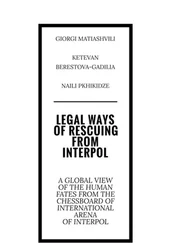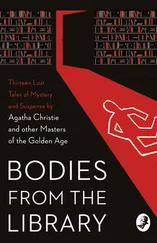The adjuster made no attempt to hide his bleak view of the situation. This had a sobering effect on the celebrants. As soon as the adjuster left, they all packed and left.
Meyer hung around 13th Street and watched the house where the body was. It began to draw detectives like a honey pot drawing flies. Meyer saw the body being removed. He knew toxicologists would find it loaded with arsenic. It would now be utterly useless, not to say highly dangerous, for Mary to attempt to collect anything on Baum.
Meyer, Mary and the Professor fled to Toledo. There, Mary, in the delayed realization that she was married to an inhuman little monster, left Meyer.
Meyer read in the papers that he was being hunted for the New York insurance murder. He dyed his hair black, substituted rimless eyeglasses for his silver-rimmed ones, and had lifts put in his shoes to increase his height. He topped off his disguise by assuming a new name — Dr. Hugo Weiler. He began to practice in Toledo, Ohio, without a license, just enough to make a living. He held onto Professor Mueller and got him a job playing the piano in a beer hall.
Meyer needed the Professor; he was cooking up still another insurance plot. An outrageously egotistical little man, he wouldn’t admit defeat. He would perpetrate a successful insurance plot if it were his last act on earth. He had come to have nothing but contempt for the law-enforcement authorities, and who could blame him? He had gotten away with murder — the murders of Henry Geldermann and his first wife — and with an attempted murder. It had been only through injudicious case of champagne and deplorable timing that the insurance companies had become aware of the fact that all was not regular with the demise of Gustav Baum. The Professor was growing increasingly confused mentally because of the fear that the law would catch up with him and send him to the electric chair in Sing Sing. After all, he had been implicated, however innocently, in a murder.
The professor’s plight was all grist for Meyer’s mill. He played on the man’s fear and brought his hypnotic powers into play on him. Soon the Professor was as much of a pawn as Peter Bretz, the Grand Canyon traveler, had been. With the Professor in his power, Meyer scoured the city for a lonely, plain girl who would fit into the plot he was brewing. He found one: Mary Neiss, a demure young lady of twenty who sold neckties in a Toledo department store. He contrived that the Professor would meet Mary Neiss.
Getting the girl under a spell, Meyer now had little trouble maneuvering the Professor and Mary into marriage. The Professor and his wife went to live in a little cottage on the outskirts of the city. Meyer instructed the groom to take out $25,000 worth of insurance on the bride. Meyer’s influence over Mueller, who knew so much about him, must have been tremendous for Mueller not to have suspected what was in the wind. But Mueller took out the insurance and Meyer paid for it. Doctor Meyer became a regular visitor at the cottage of the newlyweds. He cooked meals for his host and hostess, preparing what he described as especially nourishing dishes for the Professor’s wife. The victim took to her bed. Meyer arrived one day but found the door of the cottage locked. The Professor called on him at his office that evening.
“You can’t give Mary any more of that stuff!” he said to Meyer.
“And why not?” demanded Meyer.
“Because I’ve fallen in love with her,” Meyer began to giggle. Then he became hysterical at the irony of it all.
The Professor took Mary to Chicago with him. He had relatives there. He told them everything. Once more the State’s Attorney in Cook County listened to an incredible tale involving an incredible criminal.
The hunt for Meyer became nationwide. The doctor fled to Detroit. There he met a woman: the first woman who could make him forget the former Mary Dressen.
Like his third wife, this woman was demanding and expensive. Motivated even now by a woman, rather than caution in the face of great danger, Meyer did the one thing he was capable of doing to make a lot of money in a hurry. He began to practice as a crippled children’s specialist.
The hands of one of the most heartless killers of modem times were, miraculously enough, still great healing agents. As in Chicago, he attracted attention in Detroit almost overnight as a miracle man with children. He became lost in his work, not because he cared the least bit about the children he treated, but because of the large sums of money he was making. And at night, when the last cripple had been treated, there was always his latest woman.
But inevitably Meyer’s work with children in Detroit reached the wide-open ears of the Pinkerton Detective Agency, and one day the Pinks and the Detroit police took him without a struggle.
The Professor went free by testifying against Meyer at Doc’s trial for killing Baum. Lucky, Meyer got life instead of death.
The little man must have had visitors in his cell in Sing Sing — Henry Geldermann, his first wife, Ida Geldermann and Gustav Baum, even if no one else could see them. He mentioned their names constantly. Then one day he died: stark, raving mad, presumably after thinking too much about all that he had done.
The Case of The Traveling Doctor and the Farmer’s Wife
…in which a man has four stepsons, then three, then two…
The whole shameful business started off innocently enough. On a bitterly cold day in January, in the year of 1909, a petite, nicely-distributed brunette, who was forty-five years old but who, despite the fact that she had four grown sons, looked to be about twenty-eight, went into a doctor’s office in the village of Ubly, in Huron County, Michigan, to get something taken out of her eye. The physician, Doctor Robert MacGregor, should have simply looked into the lady’s eye, taken out whatever was in there, charged his fee, and seen the last of her.
What did happen, though, was something else again; the doctor saw considerably more of the lady than he should have seen. That set off a chain reaction that was to practically populate a local cemetery with murder victims.
The lady was Carrie Sparling, the wife of John Wesley Sparling, a prosperous milk farmer of neighboring Sanilac County, an hour’s buggy drive from the village of Ubly. She appeared in Doctor MacGregor’s waiting room about noon that day, after having driven in from the farm herself. When the door of the physician’s consulting room opened there stood the good doctor, a tall handsome athletic buck of a man.
MacGregor, who had come to practice in the village five years before, was a native of London, Ontario, and, at the age of thirty, had an oily bedside manner. He was a dandy in dress and sported black sideburns and a handlebar moustache, and had an eye for the ladies despite the fact that he had a wife. Not that the good doctor was to be blamed, for his wife was a bleak little woman, ten years his senior, who would have won any contest as the woman a man would be least likely to choose as a mate on a desert island.
“Well… come on in,” said the doctor to Mrs. Sparling. “Come right in!” His voice was a rich, barbershop quartet baritone.
Mrs. Sparling told Doctor MacGregor that she had something in her eye. Her eyes were wide, brown and innocent.
“Which eye?” Asked the doctor. Mrs. Sparling pointed to her right eye, which was red and swollen. MacGregor, who was having a rough time financially, questioned the patient at length. Among other things, he learned that her husband was quite well fixed.
“Just step in there,” said the doctor, pointing to an adjoining room, “and take off your clothes.” Mrs. Sparling went into the other room and shortly reappeared wearing nothing but a look of embarrassment. The doctor, it was later to develop, got a thorough look at the patient, finally working his way up to the troublesome eye. Then he took a swab and removed a speck of dust.
Читать дальше












